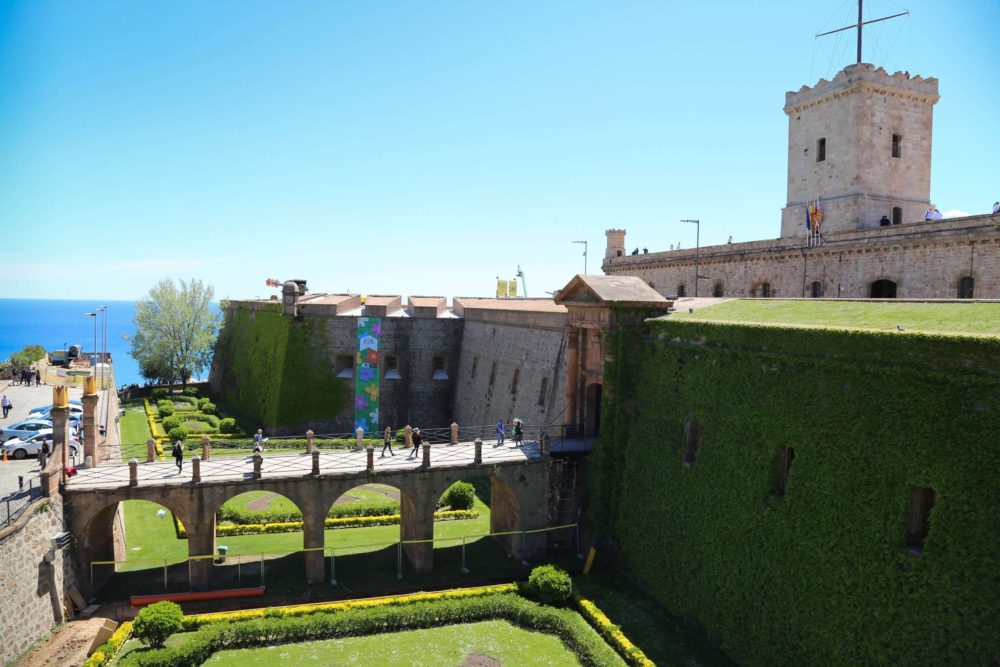
Castell de Montjuic has provided Barcelona protection for centuries and the fortress has been an important element in the city’s history.
There are a number of excellent reasons tourists find Barcelona one of the most popular cities in the world. Beauty, culture, unique attractions, Catalan magic, and so much more combine to produce a city that attracts millions of visitors each year. One of the oldest sites in the city is Castell de Montjuïc, essential to the story and history of Barcelona.

The fort’s strategic location atop a hill offers commanding views of the sea, as well as Barcelona.
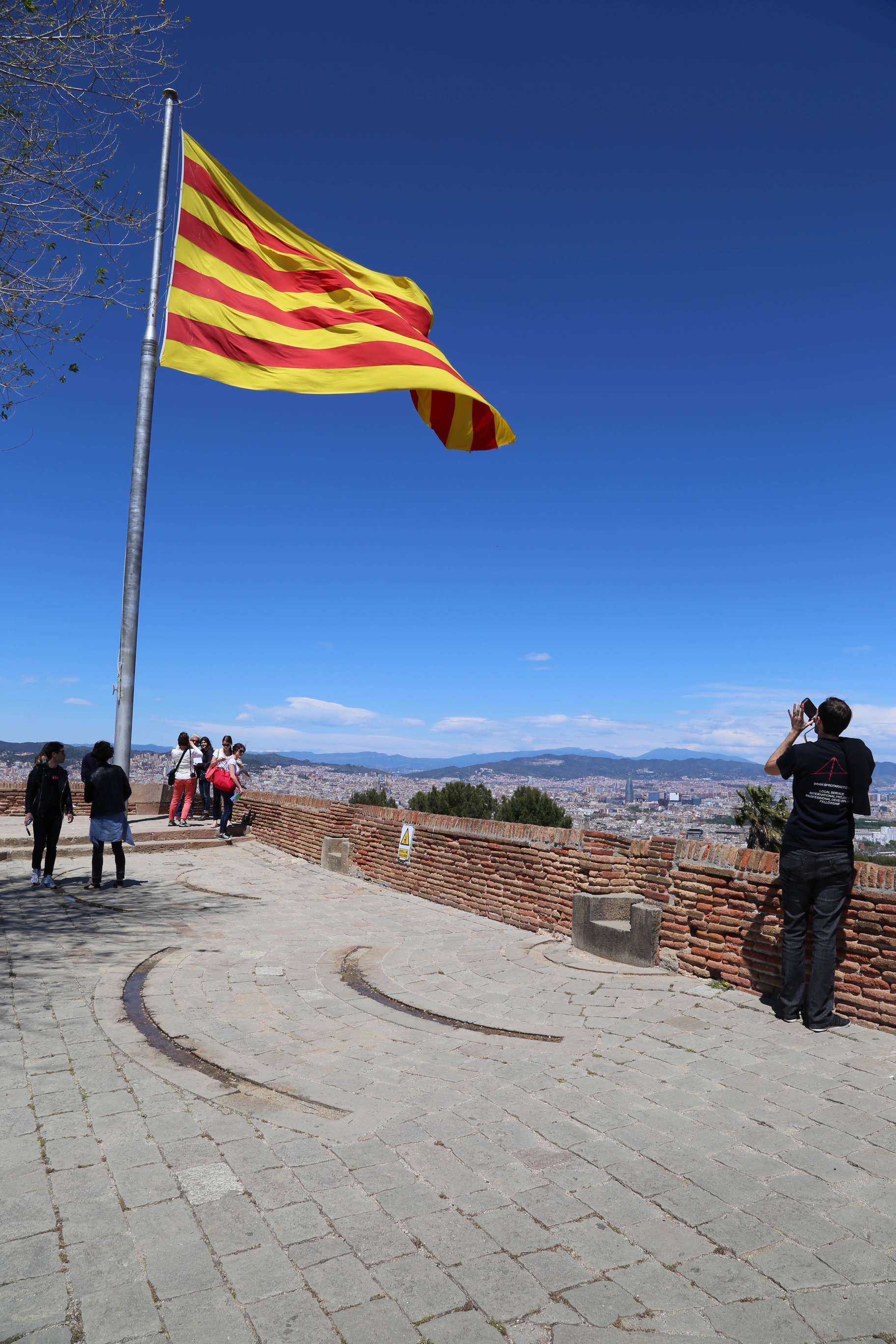
A tourist, right, snaps a photo of the Catalan flag as it flaps in the breeze. The pair of arcs to his left indicate where the wheels of cannons would have been and how far they could swing in their turret.
Like many areas along the Mediterranean Sea, the Catalan region has been occupied since the Stone Age. Over the centuries various conquerors laid claim to the area and by the Middle Ages European monarchs were squabbling over borders. Barcelona, a city within Catalonia, was coming into its own and for protection a fortress was needed. Located southwest of the center of Barcelona, high up on a cliff by the sea, a fortress has been located here, as far back as 1073. The basic foundation of Castell de Montjuïc was laid out in 1640. Within a year it would be the scene of battle when Catalans stood up to the supremacy of Spanish royals – and won. But less than 30 years later Catalonia would be subsumed into the borders of Spain – a point that fiercely proud Catalans still chafe over.

From the castle walls, Barcelona can be seen, including the imposing spires of the Catholic basilica, Sagrada Familia, center left.

Another advantage to visiting Castell de Monujuic is to see Barcelona from a different vantage point. Here the Museu Nacional d’Art de Catalunya, abbreviated as MNAC, shows off its spires and dome.
By the 1690s the fort was rebuilt and fortified, but the effort may have been wasted, because in 1705 the Siege of Barcelona was underway and by that October the British had captured the city and held it until 1714. Over the years and after many battles, the fortress became badly damaged.

Castell de Montjuic was redesigned and upgraded in the 1750s, including massive defensive walls and strategic vantage points.
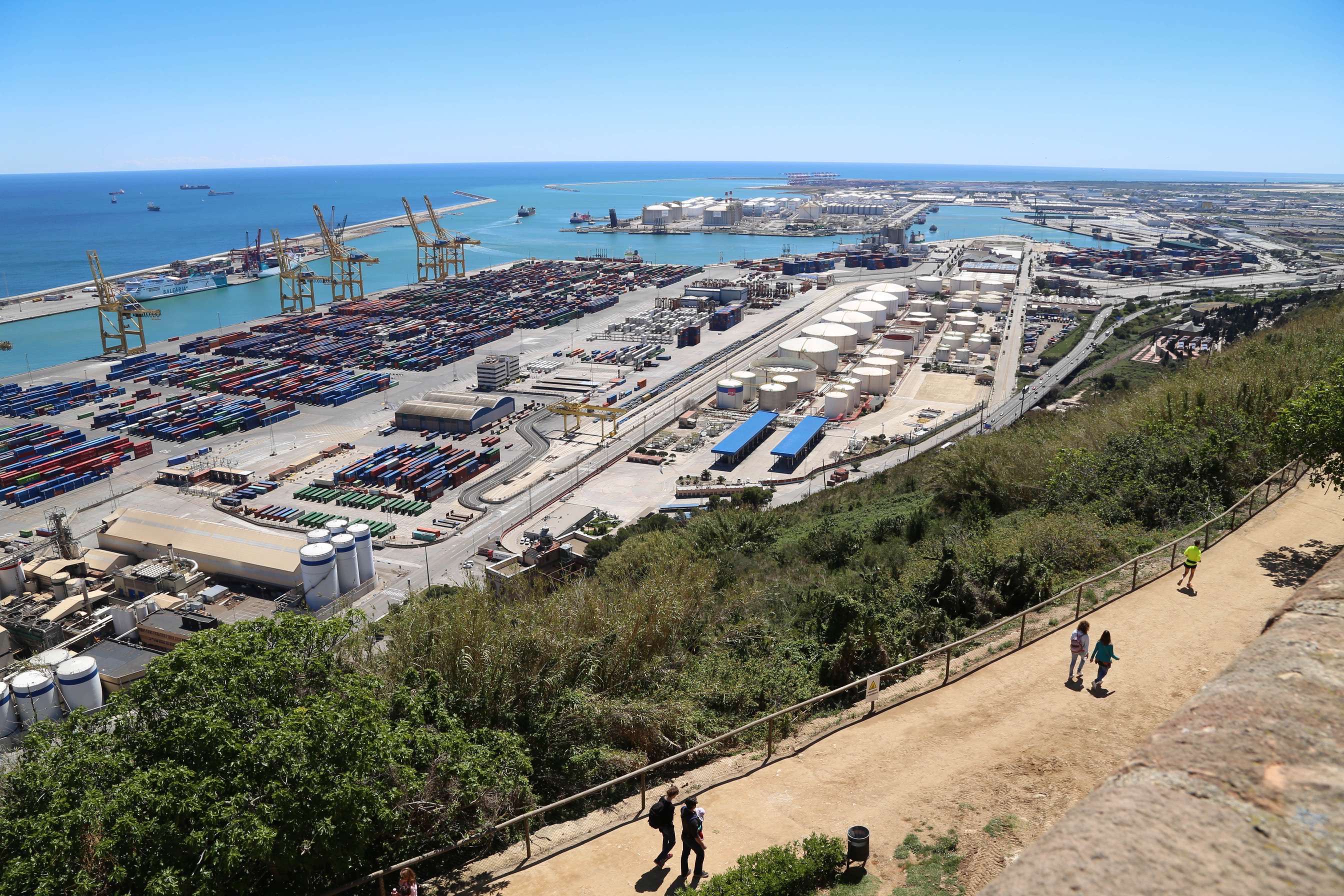
The fort’s strategic location above the city and next to the sea played an important role over the centuries in the defense of Barcelona.
In 1751 the final iteration of Castell de Montjuïc would be come into being, based on a design by Spanish architect and engineer Juan Martín Cermeño.

The pruning of the trees may seem severe, but it is a process known as pollarding, which controls their growth and does not harm the trees.

The fortress offers places to stroll among the trees.

The sugar-sweet fragrance of lemon tree blooms fill the garden with a heady scent.
Cermeño made a number of upgrades to Castell de Montjuïc, including the construction of an improved signal tower that would use flags during the day and fires at night to announce the coming and going of ships in and out of Barcelona’s port. In addition to this valuable service, the signal tower would play a key role in another important development, one that would impact Europe and much of the rest of the world. And it all started in France.

The signal tower, center left, was used to announce the arrival and departure of ships. During the day flags would be hung from the spars and at night signal fires were used. The colorful array on the floor, bottom right, represents a flower, to protest the fortress’s long association with war and violence.

When the fortress was rebuilt in the 1750s, the defensive walls were strengthened.
In the early 1790s, toward the end of the Age of Enlightenment, scientists and monarchs were keen to know things such as the size of the earth, the area of countries, distances from one point to another, and answers to many other questions. In France the problem was that as many as 250,000 different weights and measures were in use. One critical issue to settle was the true length of a meter so as to standardize length, area, distance, and volume. Back then a meter was defined in two ways – one measure was the distance light traveled (through a vacuum) in just under 1/300,000,000 of a second (1/299,792,458 of a second, to be precise). The other “standard” was 1/10,000,000 of the distance from the equator to the North Pole. Resolving the matter had obvious scientific, commercial, military, and political significance. The French Academy of Science commissioned a team to find the answer.
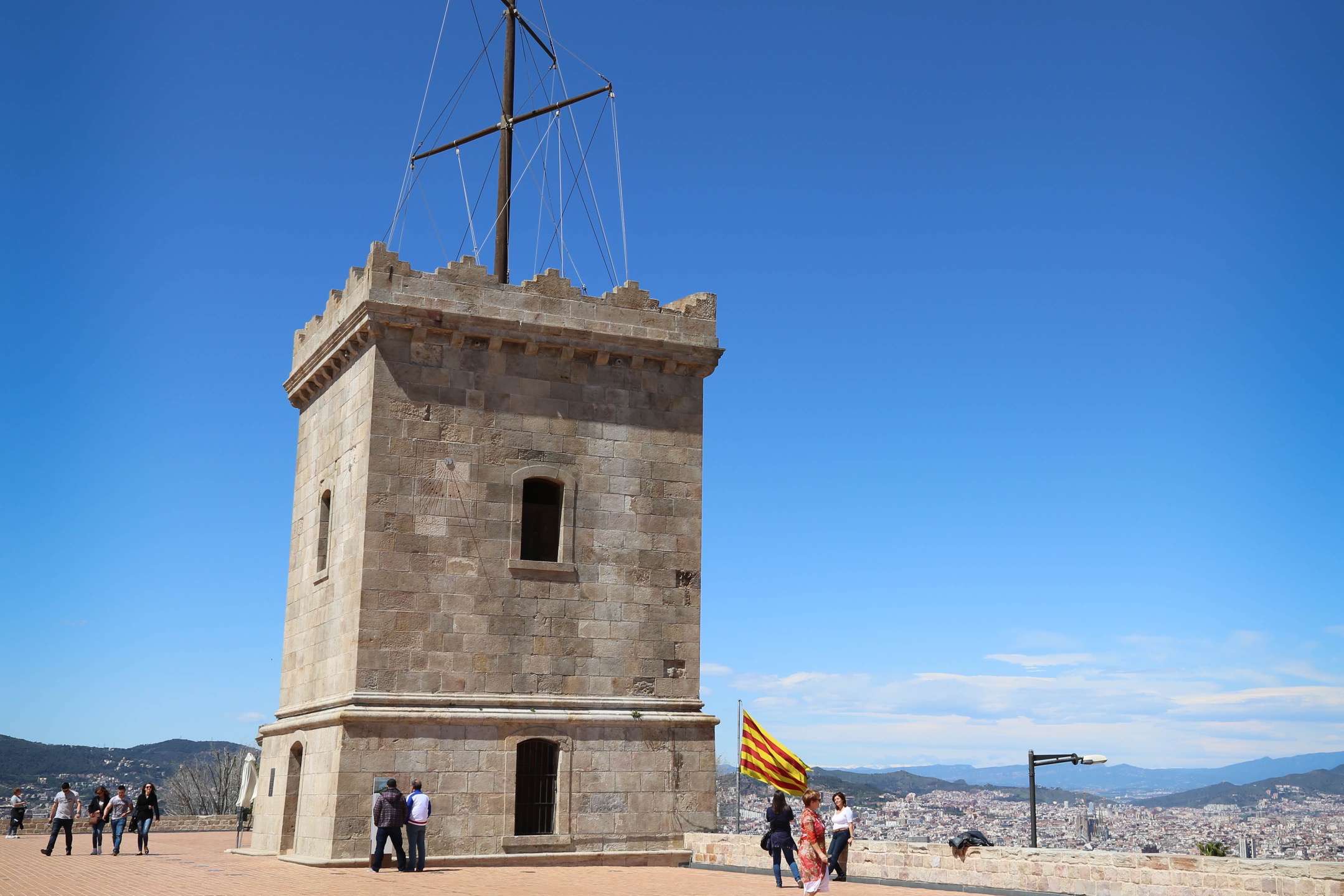
The signal tower was also a critical waypoint when a team of French scientists were taking measurements to determine the length of a meter. In addition, a sundial can be seen to the left of the window.

The soldiers with weapons that once marched through the front gate of the fort have now been replaced by tourists from all over the world toting cameras.
Beginning in 1792 Jean-Baptiste Delambre and Pierre Méchain set to work. Their task was to precisely measure the distance between Dunkirk and the signal tower at Castell de Montjuïc, going through Paris (a straight longitudinal line). Delambre started from Dunkirk and worked south and Méchain began at Castell de Montjuïc and went north. It took the pair until 1789 to complete the effort and their calculations produced the length of a meter that is used today throughout most of the world – one meter being 39.3701 inches.

Even in the heat of a Catalan summer, this stone corridor remains cool.

After Francisco Franco took control of Spain and installed a fascist government, this spot was used to honor him. But more recently, the pennants with flowers of peace have supplanted that ugly memory of oppression.
In the 1930s during the Spanish Civil War, Castell de Montjuïc was fought over and captured by one side and then the other in a conflict that claimed approximately a half million lives. Sadly, when either side held the fort, they used it as a prison, interrogation center, and as an execution spot for those deemed guilty. (Francisco Franco and his faction established a fascist military dictatorship in 1939 and he ruled Spain until his death in 1975.) Today, Castel de Montjuïc celebrates peace, and the cannon turrets that are still on the grounds are festooned with decorations to evoke the sense of flowers.
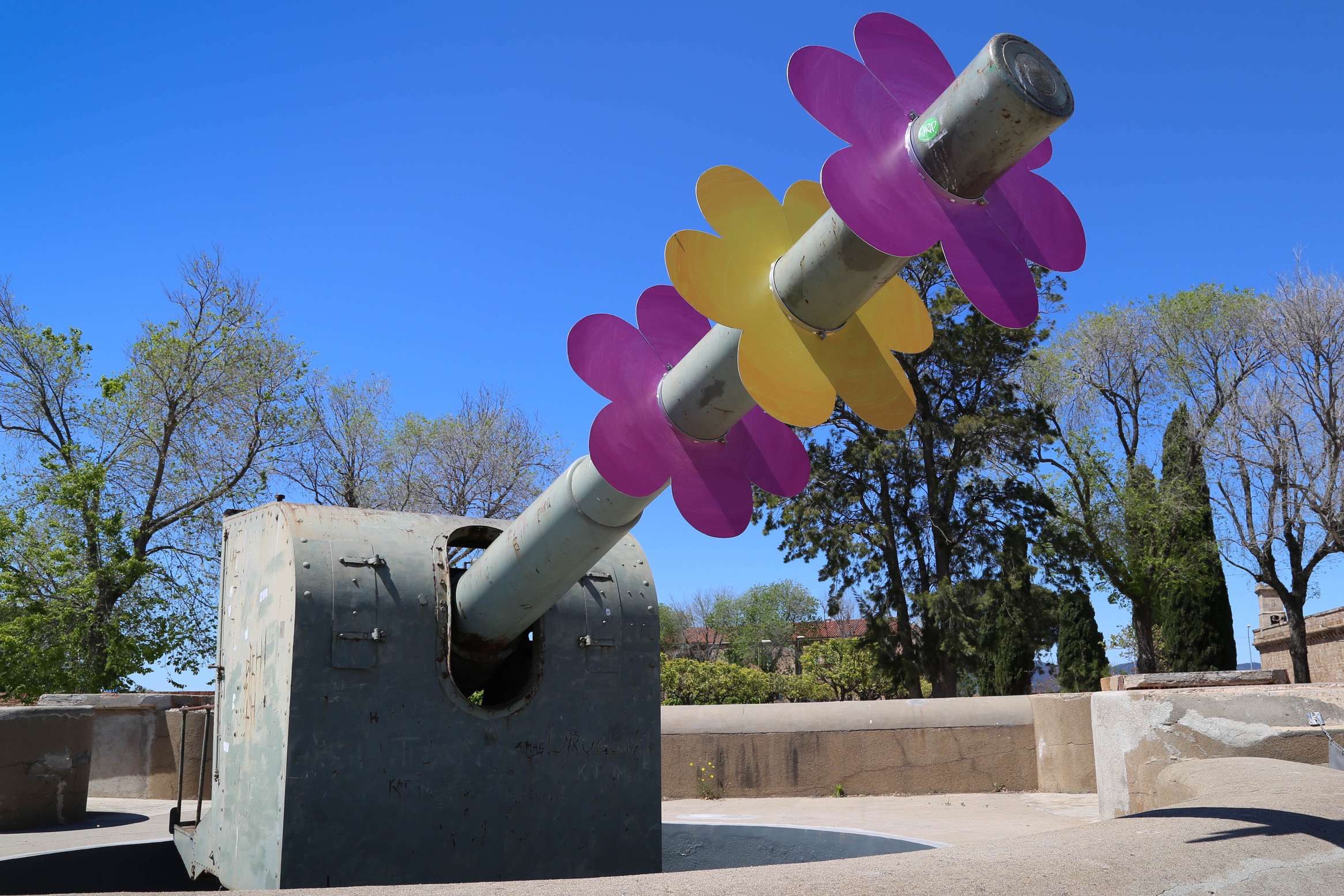
This canon of Castell de Montjuic is silent, and and instead of being instruments of war, it serves as a stem for flowers, declaring peace instead of war.

Visitors to Castel de Montjuic can enjoy a leisurely cable car ride and take in the sights of Barcelona below, including Sagrada Familia, just to the right of the support tower.
The castle is now owned and operated by the city of Barcelona and one of the most enjoyable ways to get to Castell de Montjuïc is by cable car that began operation in 1970. The leisurely ride affords grand views of Barcelona below as the enclosed cars wend their way to the top. Cars and taxis also have access to the castle grounds.

From the perspective of a cable car, the bustling city of Barcelona appears to spill into the Mediterranean Sea.
On a sunny day while standing atop the castle and taking in the vistas of the blue Mediterranean Sea and a city beloved by the world, one can appreciate that Castell de Montjuïc has carefully watched over Barcelona for well over a thousand years.
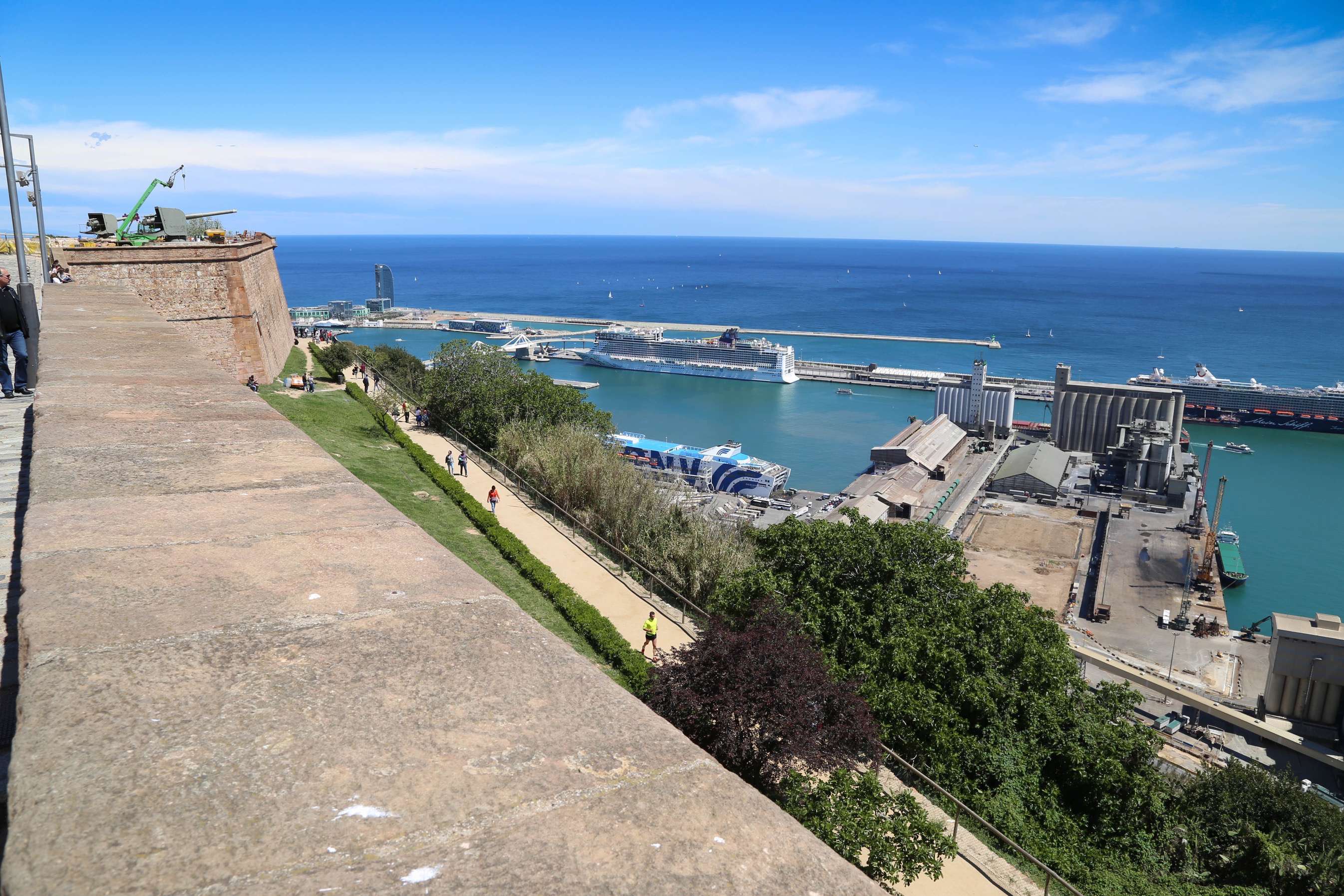
Barcelona’s visitors come by land, air, and sea. The mega cruise ship, center, is a 4,100-passenger behemoth. In 2017 approximately 370 cruise ships were scheduled to call on the city, sometimes as many as six ships in a day, adding to the crush of tourists.
For more information about Castell de Montjuïc, click over to these websites:
cnn.com/travel/most-visited-cities-euromonitor-2017
scientificgems.wordpress.com/dunkerque-to-barcelona-in-metres-a-review-of-the-measure-of-all-things/
barcelona.de/en/barcelona-castell-montjuic
